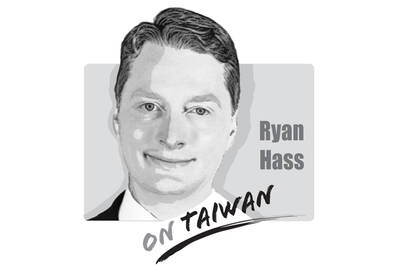After having been virtually grounded for the past two years, I flew to New York last week. I was met with quite a few surprises on the journey, starting from my arrival at San Francisco International Airport. There, masks were required, but the flight was full.
When I arrived at John F. Kennedy International Airport in New York, it was bustling. In the evening I went out for a meal, and the restaurants were all full: Some even had lines of customers waiting to get in.
People were required to wear masks at all times, but it had the appearance of being a mere formality; people rubbed shoulders with others, and from the voices and the accents I heard, I would guess that the majority of visitors were European.
In the street outside the Empire State Building there was a tent every 10m or so offering free COVID-19 tests, but there were few takers.
In the evening, I went down to Broadway, which was bustling, and nearby a sea of concertgoers was descending on Carnegie Hall. Everyone was required to wear a mask at all times, and before they were allowed in they were asked to show evidence of having received three vaccines.
The air could have been thick with SARS-CoV-2, but nobody seemed to mind.
Before I had left Taiwan, I made sure to get a fourth COVID-19 vaccine dose. I told the doctor that I was going to New York and wanted to make sure I was protected, and they nodded their head in approval.
On my third day in the city I got a bit of a sniffle in the evening — I guess there was no avoiding it — but it had gone by the time I woke up the next day, and I felt right as rain once more. I went on with my trip as planned.
Compared with New York, the restaurants in California were all open, but they were not as packed. I also noticed that many customers preferred to take out their orders rather than eat in.
In that way, you could say that California is a bit like Asia, with everybody still monitoring the situation, still wary.
New York on the other hand was more like Europe, where people have come to just accept that the virus is here.
People are everywhere in the subway and in restaurants as before the COVID-19 pandemic, except that now everyone is wearing a mask. Office life has also returned to normal.
Everyone seems to be paying less and less attention to the number of confirmed cases; so long as there are not too many people with severe symptoms putting a strain on the medical system, nobody seems to care all that much.
The virus is now in its fourth wave, but the vaccines and accumulated antibodies are keeping the worst effects at bay, and life has pretty much returned to normal. Lockdowns are a thing of the past, and the focus is on vaccines and developing antibodies.
People are, after all, social animals, and the economy needs to continue moving.
Mike Chang is an accountant.
Translated by Paul Cooper

There are moments in history when America has turned its back on its principles and withdrawn from past commitments in service of higher goals. For example, US-Soviet Cold War competition compelled America to make a range of deals with unsavory and undemocratic figures across Latin America and Africa in service of geostrategic aims. The United States overlooked mass atrocities against the Bengali population in modern-day Bangladesh in the early 1970s in service of its tilt toward Pakistan, a relationship the Nixon administration deemed critical to its larger aims in developing relations with China. Then, of course, America switched diplomatic recognition
The international women’s soccer match between Taiwan and New Zealand at the Kaohsiung Nanzih Football Stadium, scheduled for Tuesday last week, was canceled at the last minute amid safety concerns over poor field conditions raised by the visiting team. The Football Ferns, as New Zealand’s women’s soccer team are known, had arrived in Taiwan one week earlier to prepare and soon raised their concerns. Efforts were made to improve the field, but the replacement patches of grass could not grow fast enough. The Football Ferns canceled the closed-door training match and then days later, the main event against Team Taiwan. The safety
The National Immigration Agency on Tuesday said it had notified some naturalized citizens from China that they still had to renounce their People’s Republic of China (PRC) citizenship. They must provide proof that they have canceled their household registration in China within three months of the receipt of the notice. If they do not, the agency said it would cancel their household registration in Taiwan. Chinese are required to give up their PRC citizenship and household registration to become Republic of China (ROC) nationals, Mainland Affairs Council Minister Chiu Chui-cheng (邱垂正) said. He was referring to Article 9-1 of the Act
The Chinese government on March 29 sent shock waves through the Tibetan Buddhist community by announcing the untimely death of one of its most revered spiritual figures, Hungkar Dorje Rinpoche. His sudden passing in Vietnam raised widespread suspicion and concern among his followers, who demanded an investigation. International human rights organization Human Rights Watch joined their call and urged a thorough investigation into his death, highlighting the potential involvement of the Chinese government. At just 56 years old, Rinpoche was influential not only as a spiritual leader, but also for his steadfast efforts to preserve and promote Tibetan identity and cultural